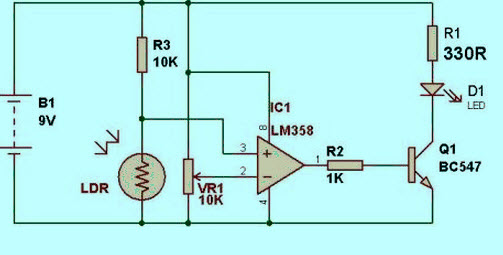
Introduction
Brief Overview of Electronic Circuits and Their Importance
Electronic circuits play a crucial role in our daily lives, especially in managing the electrical components of devices like AC systems. The electronic circuit breaker is designed to protect these devices from damage by monitoring and controlling the flow of current. Its schematic diagram illustrates how components are interconnected to achieve this function efficiently.
Key Components of Electronic Circuits
The key components of electronic circuits include resistors, capacitors, transistors, and integrated circuits. These elements work together to regulate the flow of electricity within a circuit, ensuring that devices operate within safe limits. The op-amp module, an essential component, enhances the precision and stability of the electronic circuit breaker's operation.

Understanding Circuit Diagrams
Explanation of Schematic Diagrams for Electronic Circuits
Electronic circuits are visualized through schematic diagrams that depict the connection of components and the flow of current. These diagrams use symbols to represent different elements like resistors, capacitors, and transistors, enabling engineers to understand the circuit's functionality at a glance.
Benefits of Using Circuit Diagrams for Troubleshooting
Circuit diagrams assist in troubleshooting electronic systems by providing a clear roadmap of the connections and components. Engineers can easily trace faults, identify potential areas of failure, and make necessary repairs efficiently. This visual representation simplifies the diagnostic process, saving time and ensuring accurate problem resolution.

Working Principle of Electronic Circuit Breakers
Overview of How Electronic Circuit Breakers Function
Electronic circuit breakers operate based on the principle of detecting abnormal current flow in a circuit and interrupting the power supply to prevent damage to devices or electrical fires. These breakers constantly monitor the current passing through them and trip when the current exceeds the set limit, breaking the circuit and disconnecting the power source from the load. This mechanism safeguards equipment and wiring from overheating and potential hazards.
Importance of Circuit Breakers in Preventing Electrical Overloads
Circuit breakers play a crucial role in protecting electrical systems from overloads that can lead to equipment damage or fires. By quickly interrupting the flow of electricity when anomalies are detected, circuit breakers prevent excessive current from flowing, ensuring the safety of both the connected devices and the users. Their ability to trip automatically in case of overload conditions helps in maintaining a secure and reliable electrical infrastructure.

Components of Electronic Circuit Breakers
Description and Role of Components such as LM358 IC
– LM358 IC: A crucial component in electronic circuit breakers for amplifying signals and comparing voltages to ensure proper functioning.- Resistors: Help in setting the threshold current limit and voltage ratings for the circuit breaker.- Capacitors: Assist in stabilizing the voltage and filtering out noise to maintain circuit stability.- Transistors: Facilitate switching operations within the circuit for tripping when overloads occur.
Significance of Power Supply Voltage in Electronic Circuit Breakers
– Power supply voltage determines the operating range within which the circuit breaker can effectively monitor and interrupt current flow.- Voltage levels are essential in establishing the threshold at which the circuit breaker trips to protect devices from damage.- Maintaining stable power supply voltage ensures the reliability and accuracy of the circuit breaker's operation in safeguarding electrical systems.

Applications of Electronic Circuit Breakers
Common Uses of Electronic Circuit Breakers in Various Industries
– Industrial Sector: Protecting machinery, equipment, and power systems from overloads and short circuits.- Residential Buildings: Safeguarding electrical appliances and devices from excessive currents.- Commercial Establishments: Ensuring uninterrupted power supply by preventing circuit damage.
Advantages of Implementing Electronic Circuit Breakers
– Enhanced Safety: Protects electrical systems and devices from potential hazards.- Quick Response: Swiftly interrupts excessive currents to prevent damage.- Versatility: Can be tailored to specific voltage and current requirements for diverse applications.
